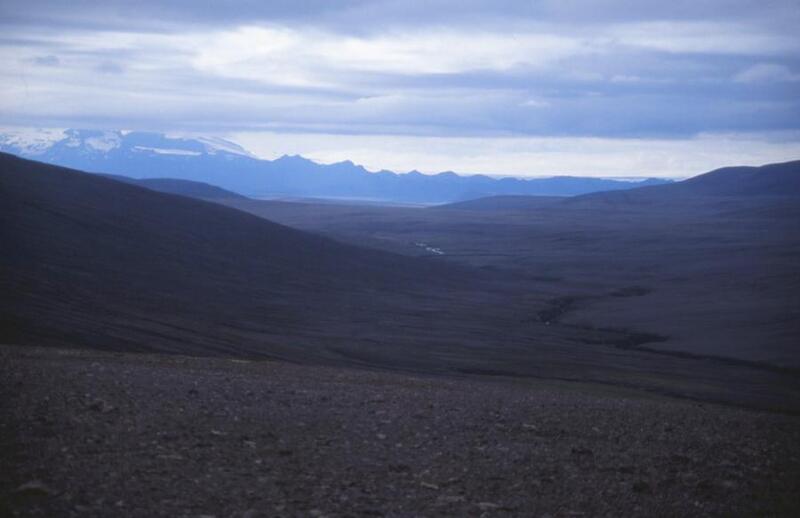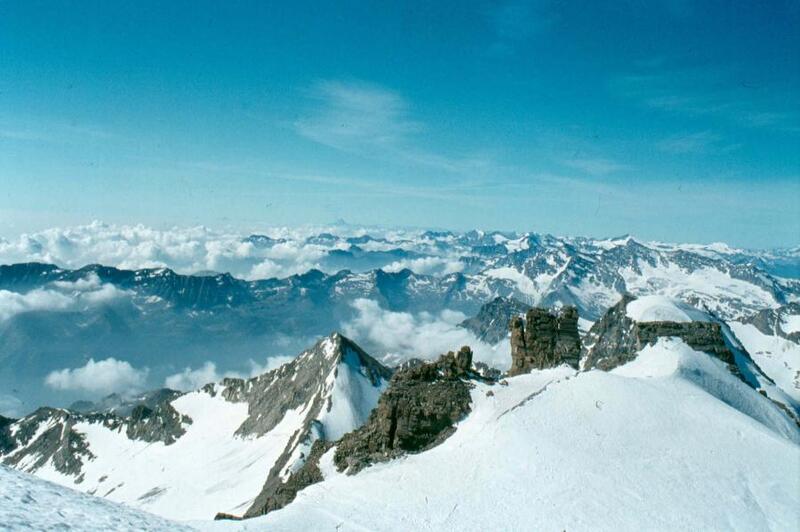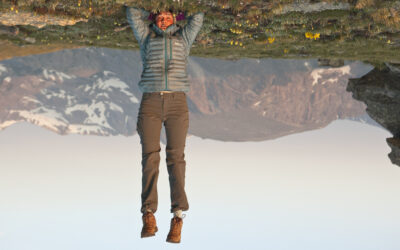Photo credit: jplenio from Pixabay.
Wilderness Babel
International Perspectives
August 2022 | Volume 28, Number 2
“Wilderness” as a term in the English language denotes a multiplicity of meanings. In its most popular version, English speakers consider wilderness as a place largely void of people, nature in the raw, quintessentially uncivilized. Whether as a concept or as a legal definition, wildernesses generally lack roads and buildings, at once the embodiment of a spiritual, more-than-human dimension and an inspiration for the human soul. Yet wilderness, now and in the past, can also include traces of humanity or at least a distinct human presence in the ways that we describe it or circumscribe it. As we look for wilderness in other lands and places, we realize that—in form or function—it can vary quite dramatically according to region or century or language.
Whether “wilderness” is conceived primarily as a dangerous mountain to be avoided, an immense tundra teeming with migratory birds or a tropical repository of biological and pharmaceutical wealth, depends on our heritage, and such heritage is intimately linked to the words we use to describe it. Adjectives in English such as “pristine,” “primitive,” “old-growth,” and “untrammeled” describe wilderness but do not replace it. Wildlife dwells in this place, but sometimes so do wild, semi-human beings, at least in the times or locations where they can be found. Trolls, leprechauns, satyrs, gnomes, and nymphs are all semi-humans nourished by the wild, and placed there by the imaginations of people who do not live in the wilderness. Recent calls for a vitalist politics as a means to mitigate the apparent dichotomy between nature and culture and the separation of the human from its environments—which is seen as one of the roots of our current environmental crises—stress the need to weave new stories of the wild, thereby allowing human, non-human, and more-than-human dimensions to co-exist (Ghosh 2021).
An Online Virtual Exhibition
Wilderness Babel first started a decade ago as an online virtual exhibition on the Environment and Society Portal of the Rachel Carson Center for Environment and Society, which is a nonprofit joint organization of the University of Munich and Deutsches Museum in Germany. The goal of that exhibit was to offer translations of non-English terms for wilderness, and describe how these terms may be similar or dissimilar to their English counterpart.
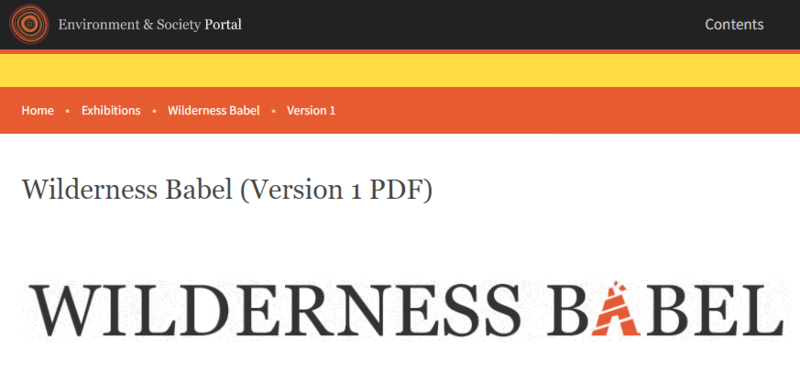
In 2013, the Environment & Society Portal and Marcus Hall published the virtual exhibition, “Wilderness Babel” as a collaboration with the Institute of Evolutionary Biology and Environmental Studies at the University of Zurich.” https://www.environmentandsociety.org/exhibitions/wilderness-babel/wilderness-babel-version-1-pdf
To date, Wilderness Babel has sampled some 20 non-English wilderness terms. Native speakers of Italian, Icelandic, Chinese, and other languages offered the best counterpart term(s) to wilderness in their languages; in addition, they offered extended meanings, and added images, soundtracks, and videos, and even pronunciation guides to corroborate what these wildernesses actually look, feel, and sound like. An Early English specialist also offered overviews of “wilderness” meanings during medieval times. Wilderness Babel was initially conceived as a sort of reference tool for cataloging and describing wilderness as it is understood in many of the world’s major languages and several of its minor ones. So even as “wilderness” in its various connotations and permutations has long served as a rich historical subject, motivating such historians as Roderick Nash (1967) and William Cronon (1995) to explore its changing meanings according to period and event, Wilderness Babel was conceived largely as a linguistic project, by acknowledging that beyond the English speaking world there are a multitude of terms for the wild, wildness, and wilderness, whether as noun or adjective, that can also vary according to period, event, and interpretation.
In its current state, the exhibit hosted by the Rachel Carson Center’s Environment and Society Portal subsequently developed into a somewhat Eurocentric project, with just a handful of samplings of the larger global dimension. Wilderness-equivalent terms, from víðerni (Icelandic) to deserto (Italian) to 荒野 [huāngyě] (Chinese), are translated by bilingual authors in a few short paragraphs, highlighting how these terms may be similar to or different from the wildernesses that native English speakers know and understand.

This version 2, published in 2020, includes minor updates to the original 2013 virtual exhibition (view PDF here) and applies the Environment & Society Portal’s responsive layouthttps://www.environmentandsociety.org/exhibitions/wilderness-babel
The subtleties of meanings encompassed by the above terms, say, between human presence or absence, or between love and fear for the wild regions, is what the project has come to explore (Hall and Graf von Hardenberg 2020). Even across English-speaking countries, references to “wilderness” were found to elicit different feelings, images, and sounds; and indeed, some of these wild places evoke entirely different words. In indigenous Australia, “country” or “outback” typically hold precedence to “wilderness” as a way to describe big, uninhabited places; in Canada, “the bush” is a popular alternative for the term (see Fletcher 2021).
Icelandic – Víðerni and Öræfi
BY UNNUR KARLSDÓTTIR
The idea of wilderness in Iceland is directed towards landscape and uninhabited areas rather than wildlife, since the wild animals of the island regularly cross the borders between the natural and cultural landscape in finding their habitat. Today, the Icelandic term víðerni, is most often used to embrace the modern meaning of the English word “wilderness.” It describes a vast area of wild (“untouched”) nature. It refers to natural landscape as a space, as a visual experience, sublime and aesthetic. And it emphasizes how small we are in comparison to Nature’s creation. In modern Iceland the term víðerni is used to signify the Icelandic central highland. This has to do with the geographical and geological nature of the country. Iceland is a relatively large island, just over 100,000 km2 in size. Most of the island is sparsely vegetated, due to volcanic ash and erosion following deforestation and grazing since the country’s settlement in the ninth century. Around 75–80% of the island is considered uninhabitable, in particular the central highland. The outlines of Iceland are shaped by mountainous peninsulas, fjords, and bays, and the habitable area is the narrow lowland around the coast and in the valleys. The highland (Icelandic hálendi) rises up in the center: a black desert, lava fields, mountains, glaciers, some vegetated zones, and a few wetland oases. The heavily streaming, murky, milky-white glacial rivers cut through the landscape, having dug their way through rock and soil and created canyons and waterfalls on their way to the sea. The desert-like character of the highland is highlighted in the synonym used to describe it, i.e., the Icelandic noun öræfi, which refers to a region of no use and a hostile environment for humans and animals. The word öræfi is a name given to this kind of nature from the perspective of the farmers, who consider regions with no grass for their livestock to be a nature of no use.
Iceland was a wilderness when settled, and since Icelanders have a written narrative of the Nordic/Celtic settlement, we have a description of how the settlers perceived its nature and its resources and distributed it between themselves as a property and commons. In that story the central highland was not an inaccessible world unknown or unnamed. Names were given to its parts, to the mountains and glaciers. From early on people crossed back and forth across the highland while riding from one quarter of the island to the other. Furthermore, the use of the vegetated parts of the highland as a summer grazing area for livestock also brought humans in contact with this wilderness every year through the centuries. In the latter half of the twentieth century, mountaineering and nature tourism brought this area into focus in a new way, both in an economical and ideological sense. In recent decades it has been praised for its remote and sublime nature and as an essential arena for outdoor experience and recreation for the modern citizen. Today the central highland is seen as an escape from the noisy and hectic world of techno-industrial modernity, an expression of contemporary wilderness romanticism. Thus, one can say that Icelanders have always had a practical and ideological connection to their country’s wilderness.
-Unnur Karlsdóttir is Director and researcher at The University of Iceland Research Centre in East Iceland
Uses of the Exhibit
Wilderness Babel is therefore producing a linguistic map that reveals the complexity of the meanings of wilderness, and how these meanings may overlap across language groups and nation states, even suggesting new relationships between terms. Independent of the creators’ original intentions, the exhibit has begun taking on a life of its own across different fields.
In higher education, Marcus Hall at the University of Zurich routinely asks master’s students in a course on environmental humanities to read over the Wilderness Babel for emphasizing the complexity of identifying precise goals in rewilding projects; likewise, Bill Adams at Cambridge’s Department of Geography has utilized the exhibit in some of his own courses about conservation and development, with a focus on Africa. In environmental diplomacy, the exhibit has been used to prepare for discussions at Antarctic Treaty Consultative Meetings where 29 nation states that are Consultative Parties to the Antarctic Treaty negotiate the implementation of the legal obligation to protect Antarctica’s wilderness values using the four official languages of English, French, Russian and Spanish. In the field of collective trauma integration, Wilderness Babel has been used to provide shared wilderness experiences (online) to connect 50 international participants in a Climate Change and Collective Trauma International Lab process; the process explored how trauma shapes worldviews, which lead to disconnection of humans from the planet and the climate crisis (Pocket Project 2021). On a personal level, for Tina Tin, writing the Chinese contribution for Wilderness Babel has been instrumental in helping her integrate the worldviews that she has been born into with those that she adopted from different cultures. This has allowed her to develop more coherence in her identity, while giving her greater ability to understand systems and culture with more depth and clarity. The original Wilderness Babel contribution was later expanded into an IJW article (Tina and Yang 2016), and nourished the reflections around the planned 11th World Wilderness Congress (WWC) in China in 2019.
Wilderness Babel has proven to be a useful tool. In the next phase of the project, we hope to expand the original map into a large and useful collection of ideas for land managers, policymakers, environmental theorists, outdoor recreators, and nature enthusiasts. After all, if we continue to develop global or transnational programs to save wilderness, or even seek to bring parts of it back in rewilding programs, the better we can understand one another’s terminologies, the better our chances of success.
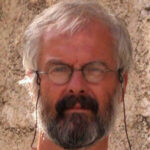 Italian – A Language Without Wilderness
Italian – A Language Without Wilderness
BY LUIGI PICCIONI
If one sets out to translate the English word “wilderness” into Italian, one’s first reaction is to assert simply that there is no such term that reproduces its exact meaning. But pondering the reasons for this inability to translate suggests that there is value in offering some general reflections on the subject. The best known English-Italian dictionaries offer four possibilities: a) deserto, landa (“desert”), b) solitudine (“solitude”), c) riserva naturale (“natural reserve”), d) zona naturale incontaminata (incolta o disabitata) (“natural uncontaminated area (unmanaged or uninhabited)”). Those with a passable knowledge of Italian and English realize that none of these translations captures the essence of “wilderness,” especially as it is used in US literature.
To begin with, deserto and landa are concrete, specific environments, which can be (and usually are) crisscrossed and transformed by man and carry no sentimental or moral connotations connected to the positive idea of nature itself. On the contrary, solitudine suggests a generic psycho-physical condition, or else an individual moral value that has no specific relation with nature. The term riserva naturale is meant to describe a characteristically human institution that does not necessarily reflect a condition of special purity in the demarcated area, or one that manifests values or morals implied by such a state. The phrase zona naturale incontaminata (o incolta o disabitata) is one that best captures the physical and material aspects of the word “wilderness,” which refers to a primeval nature that is neither modified nor influenced by human presence. This sense is rarely used in Italian and is a complicated and awkward substitute for the simple, elegant, and evocative English equivalent; when employed, it usually refers only to a few small-scale situations with few general applications. As if that were not enough, this last phrase completely lacks sentimental and moral connotations that are so striking in the English term, at least in the meaning of the US “wilderness debate.”
The English meaning contains two elements that are strictly connected and inseparable: a nature that is uncontaminated, primeval, untransformed, selvaggia (“wild”), and one that denotes a sentimental and moral attitude of humans toward nature itself, offering a unique view of nature. All the various possible Italian translations are, on the one hand, unable to transmit this synthesis of natural phenomena and human visions, and on the other hand, are rather poor renditions of each of these elements taken separately.
The challenge before us remains one of explaining the semantic asymmetry between the English-speaking—especially US—and Italian worlds. At the material, “physical-geographical” level, there is the fact that for many centuries Italy has almost completely lacked any natural areas that can be considered both inspirational places void of contamination and places wholly absent of any human traces. There are in effect sites that are largely primeval, but these are extremely rare, almost impossible to access, or are largely void of spectacular flora and fauna. It is difficult to imagine, for example, Henry David Thoreau or Aldo Leopold spending a few months or years of their life at the foot of the Grandes Jorasses and being inspired by nature. At the symbolic level, the crucial issue is a national culture that has never experienced, beyond a few very minor and recent exceptions, a relationship with a primeval nature that is intensely emotional and tinged with moral concerns for that nature.
-Luigi Piccioni is a research fellow in economics, statistics, and finance department of the University of Calabria
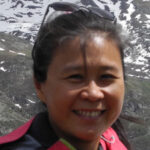 Chinese – Huāngyě (abridged version)
Chinese – Huāngyě (abridged version)
BY TINA TIN
In the Chinese language, there are no exact equivalents of the word “wilderness.” In modern Chinese, “wilderness” is commonly translated as 荒野 (huāngyě). 荒 (huāng) and 野 (yě) can be considered as synonyms, indicating places where plants and animals are not cultivated by humans. In modern Chinese, this has been extended to include places that have not been subject to human influence. Since land that has not been tamed by humans may threaten human survival, 荒野 has also adopted a connotation of savage, violent, and dangerous. 荒 and 野 can be separated and paired up with other words, such as 地 (dì [land], as in 荒地 [huāng dì] or 野地 [yě dì]) or 原 (yuan [plains or original], as in 原野 [yuan yě], 荒原 [huāng yuan]) to describe wild land, wasteland, or fields that are original or primitive. 旷野 (kuàng yě) and 蠻荒 (mán huāng) are also sometimes used to describe wilderness. They convey additional connotations of vastness and spaciousness (旷 kuàng) and being savage and uncivilized (蛮 mán). With 自然 (zìrán) being the standard translation of “nature,” the phrase “wild nature” is often translated as 野性自然 (yěxìng zìrán) or 原始自然 (yuán shǐ zìrán); the first translation conveys the essence of not being domesticated while the second captures the sense of being original or primitive
In Chinese literature, wild nature was often depicted as frightful and treacherous. In poetry dating from around the second century BCE, wild animals and plants, hostile conditions, and barbarians made wild nature highly undesirable compared to the comforts of the city and human civilization. Nearly two thousand years later, in the seventeenth century CE, Chinese travelers to the newly annexed island of Taiwan also considered the impenetrable mountains, dense forests, and uncultivated lands to be worthless compared to the comforts of their hometowns. The new island lay far away from the imperial center, in a region of 荒 (huāng), which was cultureless, savage, and chaotic. Around the same period, the northeastern corner of China was coined the “Great Northern Wilderness” (北大荒 běi dà huāng). Migration into the region from the south was prohibited by imperial rule. The region was preserved as a private royal park, a storehouse of wild game and plants for consumption by the imperial court. Population was kept low, and agriculture was not developed. In the late nineteenth century, it was still described as an unfortunate land of bleak desolation due to the absence of human settlement.
Some scholars from the twenty-first century consider that ancient Chinese poets expressed their appreciation of wilderness through classical Chinese “mountains and rivers” (山水 shan shui) poetry. 山水 poetry originated in the third and fourth centuries CE. In such poems, wild nature functioned as much as a symbol as a concrete locality. They conveyed how poets wished to return to their original “wild” roots, where they could express their freely flowing emotions, sense their interdependence with all land and nature, and live their freedom and wildness away from the bondage of society.
In modern times, Chinese people continue to bring their perceptions of wilderness with them in their engagements with wild nature outside their homeland. To first- and second-generation Chinese immigrants settling in Vancouver, Canada, wilderness is often associated with places that are barren, desolate, hostile, undesirable, and abandoned. Their lack of familiarity with such spaces and lack of skills for wilderness survival make them fearful towards wilderness. Immigrants from rural China associate wilderness with the impoverished countryside in China where they (or their family members) walked, worked, and slept outdoors as a matter of toil and survival and not of spiritual escape or choice. The number of opportunities for Chinese people, especially the affluent, to engage in outdoor recreation and tourism is increasing, and provides space for new perceptions of wilderness to emerge.
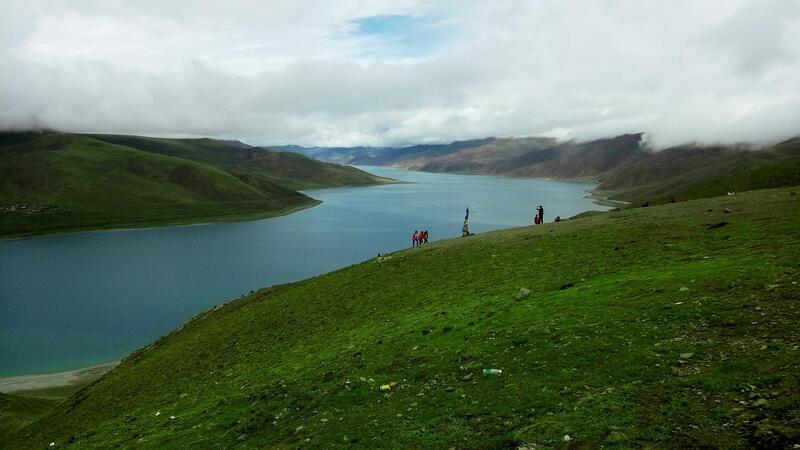
The Qinghai-Tibet plateau situated in the western part of China has high remoteness, high naturalness, and very low population density. Image by ayu chen from Pixabay.
Expanding the Wilderness Babel
We realize that to expand this project in the direction of true global coverage would mean to explore the meanings of “wilderness” in some 7,000 languages, depending on how one defines language. The recurring question of what wilderness means in non-English speaking lands goes to the core of wrestling with the many definitions of NATURE, that themselves count upwards of 25 separate entries in any good dictionary. Wilderness then becomes those natures that are typically less (or least) humanized, even if acts of human perception are required to single out and identify these wildernesses. We must also ask what these many non-English terms that express concepts encapsulated by wilderness can tell us about relationships between language and nature, individual and expression, society and spirituality. In fact it seems that wilderness in its many linguistic iterations can become a conduit toward greater understanding of God, self and world (Benson 2020).
“We plan to go significantly beyond the scope of the original exhibit, welcoming not only articles discussing the terminology chosen to express “wilderness” as a concept in other languages or the nuances of this word in different English-speaking contexts, but also articles that look at the same issue on completely different planes.”
In this next phase of Wilderness Babel, we extend the project from the original online exhibit and develop an ongoing series in IJW. We plan to go significantly beyond the scope of the original exhibit, welcoming not only articles discussing the terminology chosen to express “wilderness” as a concept in other languages or the nuances of this word in different English-speaking contexts, but also articles that look at the same issue on completely different planes. We believe for instance that there is space for comparative pieces drawing together different languages, or articles discussing the adoption of the English term “wilderness” in other cultural contexts–as well as other wilderness terms in English, from Outback to Jungle, and Bush to Country. We are particularly interested in pieces that drive the globalization of the project toward extra-European languages and cultures or explore how concepts of wilderness have found expression in visual representation in media of different sorts as well as in non-verbal communication.
In fact the existence of standard non-verbal languages in the form of national sign languages provides a special opportunity to understand wilderness in its many meanings, both with regards to the connections between signing and the respective national spoken language(s) and the similarities between different sign languages, but also in analyzing how signing itself affects the sensory experience of wilderness. In this latter respect, it would be particularly exciting to explore how wilderness is communicated in some of the many sign-language guided tours offered by natural reserves and national parks all over the world. Highlighting the characteristics of an exclusively visual communication about what is, for the hearing world, very much an auditory experience can allow us to better understand the complexity of the interpretative layers of which wilderness is composed. To show the potential for learning new insights from signing, one can visit the platform Signing Savvy to see two wilderness renditions, as well as Spread the Sign, to see how wilderness is signed in several non-English languages:
https://www.signingsavvy.com/sign/WILDERNESS/7609/1 (wilderness signed)
https://www.signingsavvy.com/sign/WILDERNESS/7609/2 (wilderness spelled out)
https://www.spreadthesign.com/en.us/search/ (wilderness signed in non-English languages)
Finally, other forms of non-verbal communication, for example the visual representation of wilderness in objects of popular culture such as video games and TV series, could be the object of fascinating inquiries in the different dimensions of societal translation of nature into the cultural dimensions that would add greatly to the breadth of this project. We would also welcome linguists and ecolinguists interested in doing meta-analyses of wilderness for deepening their own disciplinary angles with respect to how wilderness and its ideas are expressed.
Acknowledgements
The initial part of this essay is mostly based upon Marcus Hall and Wilko Graf von Hardenberg, “Aims, Methods, and Mapping,” Wilderness Babel, Environment & Society Portal, June 16, 2020, https://www.environmentandsociety.org/exhibitions/wilderness-babel/aims-methods-and-mapping.
All texts of the exhibition hosted by the Rachel Carson Center for Environment and Society are the intellectual product of the respective authors and come under a Creative Commons Attribution 4.0 International License. In light of this, while we always provide references when quoting a specific entry, for the sake of clarity and readability we refrain from always including the texts in quotation marks
About the Authors
MARCUS HALL is a professor of environmental history working in the Environmental Studies Department at the University of Zurich, Switzerland; email: marc.hall@ieu.uzh.ch.
WILKO GRAF VON HARDENBERG is historian of the environment, science, and knowledge at the Department of Cultural History and Theory of Humboldt University in Berlin. His research interests focus on how nature has been perceived, explained, and managed in late modern Europe and how this has had repercussions on the global scale; email: wilko.hardenberg@gmail.com.
TINA TIN is an environmental consultant living in France; email: tinatintk@gmail.com.
ROBERT DVORAK is editor in chief of IJW and professor in the Department of Recreation, Parks, and Leisure Services Administration at Central Michigan University: email: dvora1rg@cmich.edu.
References
Benson, E. 2020. Surroundings: A History of Environments and Environmentalisms. Chicago: The University of Chicago Press.
Cronon, W. 1995. The Problem with Wilderness; or, Getting Back to the Wrong Nature. In Uncommon Ground: Rethinking the Human Place in Nature, ed. W. Cronon (pp. 69–90). New York: Norton.
Fletcher, M. S. et al. 2021. Indigenous knowledge and the persistence of the “wilderness” myth. The Conversation (1 Oct 2021). https://theconversation.com/indigenous-knowledge-and-the-persistence-of-the-wilderness-myth-165164.
Ghosh, A. 2022. The Nutmeg’s Curse: Parables for a Planet in Crisis. London: John Murray.
Hall, M., and W. G. von Hardenberg. 2020. About the exhibition. Wilderness Babel, Environment and Society Portal, June 16, 2020. https://www.environmentandsociety.org/exhibitions/wilderness-babel/about-exhibition.
Nash, R. 1967. Wilderness and the American Mind. New Haven, CT: Yale University Press.
Pocket Project. 2021. https://pocketproject.org/current-projects/international-labs/climate-change-collective- trauma-global/.
Tin, T., and R. Yang. 2016. Tracing the contours of wilderness in the Chinese mind. International Journal of Wilderness 22(2): 35-40.
Read Next
Reaching Nature “Through the Noise”
Wilderness and wildlands are often epitomized by their opportunities for solitude. Their remoteness gives humans the opportunity to take time away from society and find respite, recovery, and rejuvenation.
Wildland Advocates in Unexpected Places
The concepts of “shared stewardship” or “collaborative management” can be challenging. They require shared vision, definition of clear roles and responsibilities, and commitment to the collaborative process.
Constraints to Wilderness Recreation: A Scoping Review of Existing Research
Brazil’s long-distance trails (LDT) are the descendants of historical routes of travel for indigenous peoples that date back thousands of years.


